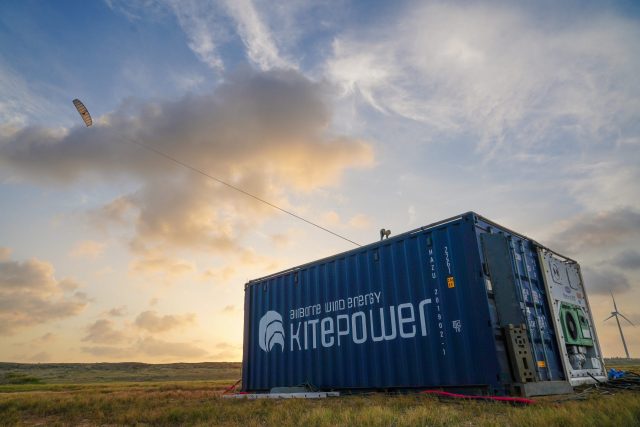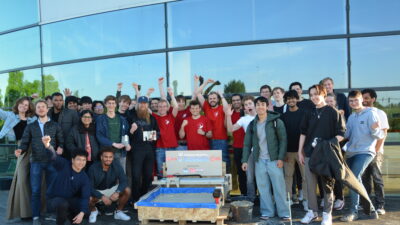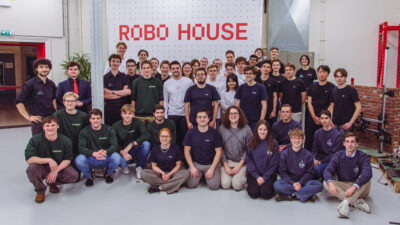The world urgently needs renewable energy sources and it seems that robot kites could become one of them. A start-up on TU Delft Campus has developed and tested a cost effective alternative to traditional wind energy generation. The next phase in its trajectory is ‘equity crowdfunding’.
Kitepower began in 2016, spinning out of a TU Delft research group established by the former Dutch astronaut Wubbo Ockels. Today the company works with Crowdcube, one of the world’s leading equity crowdfunding platforms, to allow the public to participate in Kitepower’s journey. It is possible to sign up and express interest in limited Kitepower shares. “Kitepower’s target market is microgrids, a 1 trillion dollar market,” says its crowdfunding site.
Kitepower robots generate electricity by flying a kite crosswind with a cord attached to a ground station drum. The electricity generation works in two phases: reeling out and reeling in. The beauty of the system is that the energy produced by the first phase (reeling out) is greater than the energy required to reel the kite back in (second phase).
Our wind energy can be generated almost 24 hours per day, even in rain or other harsh conditions.Roland Schmehl, co-founder & advisor of Kitepower
After five years of intensive developments – which led to the manufacturing of a 100 kW containerised generator and several 60m2 high performance robot kites – Kitepower looks back at a successful pilot demonstration in the Caribbean, a typical ‘habitat’ for the Kitepower’s Falcon.
Kitepower’s electricity generating robot kites are useful for powering remote areas and off-grid installations. The 100 kW system looks to be deployed for delivering temporary power alongside diesel generators. Roland Schmehl, co-founder and adviser of Kitepower says: “The robot kites are particularly suitable for remote locations where you need high mobility and easiness of set-up.”
Green energy from the kite can replace polluting diesel generators.Dieter Castelein, co-founder and director at Greener Power Solutions
The Kitepower Falcon offers a mobile wind energy solution that is easy to transport and install. The firm claims this uses 90% fewer materials than conventional wind turbines with equivalent power output. It also says that Kitepower’s system can produce electricity on average 75% of the time that it operates.
Joep Breuer, chief technology officer (CTO) at Kitepower, adds: “In comparison with wind turbines and solar panels, the electricy produced by Kitepower is cheaper because the system simply produces more electricity. But costs are also lower because it is a very lightweight system. Compared to wind turbines it has 90-95% lower mass. Our system fits in a standard container that we can easily ship around the world”.
Compared to wind turbines and solar panels, we can produce electricity at low winds, day and night. Joep Breuer, CTO at Kitepower
In order to accelerate the transition to renewables, more effective alternatives to fossil fuels must be implemented worldwide. This Delft based start-up is thus eager to keep demonstrating the capabilities of Kitepower’s airborne wind energy technology throughout temporary pilots as well as permanent installations, with the goal of ultimately heading towards a scaled-up system for the Megawatt class. It is inviting energy distributors and project developers to submit preorders via preorder.kitepower.nl.
Want to play a role in Kitepower’s success by investing alongside other like-minded people? Check out their crowdfunding initiative. Investments can be made anywhere from 10 euros to over 20,000 euros.



